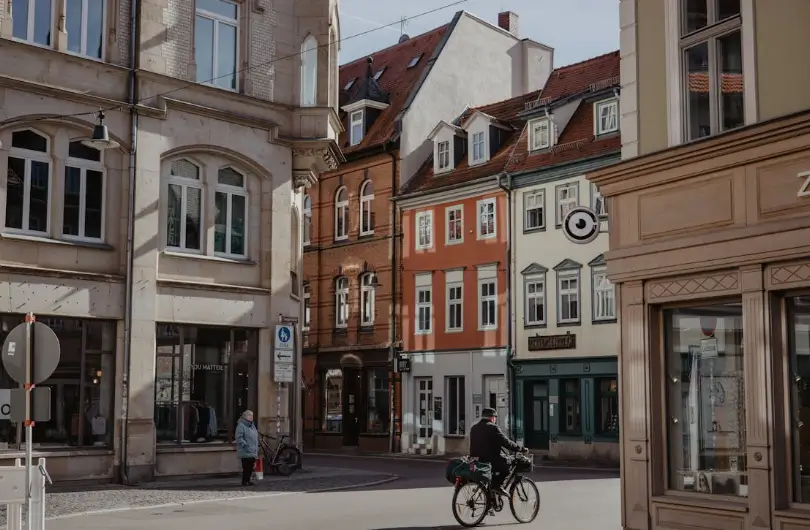AI in Planning: Disruption, Hype, and the Quiet Ways It’s Already Changing Our Work
AI has rolled into the planning profession like a shiny new train. Some folks are rushing to hop on, others are keeping their distance, and a few are just hoping it doesn’t derail everything we’ve built. But guess what, AI is already part of our world. You don’t need to be writing code or building chatbots for it to impact your workflow. If you're the kind of planner who’s often knee-deep in traffic studies, drafting yet another report, or sorting through zoning code, then AI is probably already lurking nearby. It’s not banging on the door, but it’s quietly waiting to make those repetitive tasks quicker, smoother, and maybe even a little less painful. AI is starting to sneak into the everyday parts of our jobs, whether we realize it or not.
It’s Not Just Hype
Ai is not just buzz or some sort of passing trend. A 2024 McKinsey report found that nine in ten of employees use AI in their work, and 21 percent are heavy users. That’s a massive shift. Another McKinsey study found that 71 percent of respondents say their organizations regularly use gen AI in at least one business function, up from 65 percent in early 2024. AI isn’t limited to tech firms or marketing teams anymore. It’s creeping into government offices, planning departments, consulting firms, and nonprofits. The American Planning Association even published a Planning Magazine feature in mid-2025 titled “Can AI Empower Planners to Accomplish More with Less?”, which explores how generative AI is being used in tasks like permit review, site surveys, and drafting zoning codes. So if you think AI is still on the fringe of our profession, it’s worth taking a second look.
How Planners Are Already Using AI
Right now, we’re seeing AI used in several practical ways. One of the most common is document review and report drafting. If you need to compare 15 zoning codes to see where ADUs are allowed by right, AI can scan and summarize the relevant sections in less time than it takes to grab your highlighter. AI is also showing up in public engagement, especially for analyzing open-ended responses. Instead of manually reading through 300 pages of public comments, planners can use AI tools to identify themes and flag common concerns. In the GIS world, some platforms are using AI to help with land suitability analyses, detect inconsistencies in zoning maps, or model transportation gaps.
It’s not science fiction.
We’re also starting to see AI help with forecasting and scenario planning. Whether it’s projecting population growth or testing different policy outcomes, AI can run simulations that help planners get a better picture of what could happen under different scenarios. And then there’s the little stuff. Meeting notes, quick emails, even those dry public notices, AI can help knock them out faster than you’d expect. These admin-heavy tasks don’t disappear, but they can be done faster with a little AI help, giving planners more time to actually plan.
Is It Cheating? Not Really.
Is using AI considered cheating? That probably depends on who you ask. But if we’ve long accepted spellcheck and grammar suggestions in Word, is it really that different to use AI to sharpen a report, summarize a document, or streamline how we communicate?
For many of us, that’s the most appealing part. A 2023 study from MIT found that writers using ChatGPT completed work 40 percent faster and even saw an 18 percent quality boost when tackling real-world writing tasks like cover letters, emails, and analyses. That’s a big deal, especially for planners in smaller cities or under-resourced departments. AI can level the playing field by giving staff access to tools they wouldn’t otherwise afford. It also speeds up iteration. Need three versions of a presentation for different audiences? AI can help you crank them out faster. Plus, language translation tools are making engagement more accessible for multilingual communities without hiring a full translation team.
The Risks Are Real
Still, it’s not all smooth pavement. There are serious concerns with AI use that as planners we have to be aware of. Accuracy is a big one. AI’s quick on the draw when it comes to offering solutions or breaking down complex information, but it's not perfect. It still trips up now and then and if you’re not keeping a close eye, those little errors can sneak into your work without you even realizing it. So, If you’re using them to draft a staff report or analyze code language, you still have to check the work.
Bias is another issue. AI tools learn from existing data, and if that data is biased, so are the results. Planning already has a long and messy history with equity; we don’t want to automate our blind spots. Transparency also matters. If an AI model makes a recommendation, can we explain how it got there? In public decision-making, that’s critical. And then there’s the elephant in the room...jobs. As more tasks become automated, there’s some quiet anxiety about the future of entry-level roles. If AI can write a staff report, where does that leave the junior planner?
Planning Jobs Are Changing, But Not Disappearing
A 2024 analysis highlighted by The Guardian, citing research from the Tony Blair Institute, estimated that more than 40 percent of tasks performed by public-sector workers could be at least partially automated through AI-based software and hardware. That doesn’t mean planners are being replaced, but it does suggest a shift in how we work and what we work on. Maybe the real opportunity here isn’t about efficiency, but about focus. Less time formatting tables or counting parking spaces. More time engaging with communities, shaping policy, and doing the creative, people-centered work that planners do best.
The Role of Planners in an AI World
We can’t go into this blind. As a profession, we need to set ethical guardrails, push for transparency, and stay engaged in shaping the tools that are shaping us. We also need training so that planners know not just how to use AI, but how to question it. Because if we don’t help shape these systems, someone else will. And we’ve seen what happens when planning takes a back seat to technology.
So no, AI isn’t the future of planning, it’s already here. The question isn’t whether we’ll use it. The question is how we’ll use it wisely. Maybe it’s time we stop treating AI like a threat, and start seeing it for what it could be: a tool that helps us focus on what really matters, building better, fairer, more livable communities.
Curious about another way tech is shaking up the planning world? Take a look at: Are GIS Skills a Must for Planners?
%20(1200%20x%20237%20px)%20(300%20x%2059%20px).webp)


.webp)


